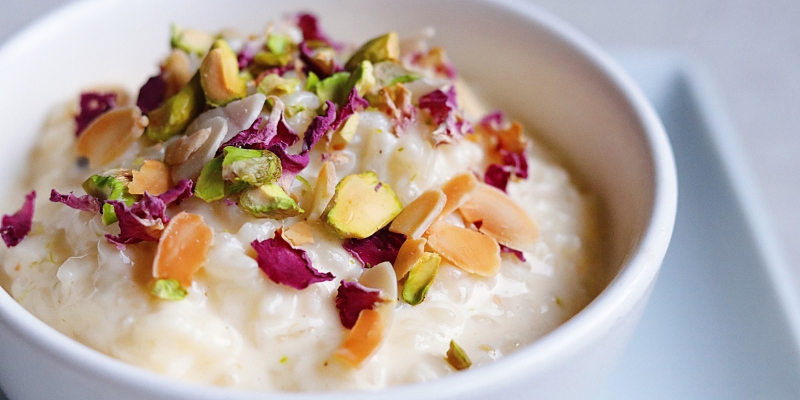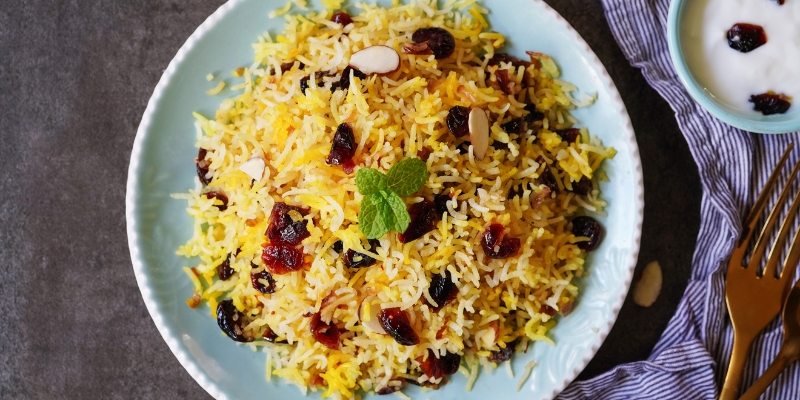Rice lovers who want to try new things in the kitchen should try to make tahdig, a masterfully crispy rice dish from Persia. One of the best examples of this is Tahdig. Tahdig, which roughly means "bottom of the pot," is the crunchy, wonderful crust that develops on the rice pot's bottom when cooking. "Tahdig" can also mean "bottom of the pot." This traditional Persian food is known for having a delicious taste and a texture that makes your mouth water.
Preparing Tahdig takes some skill and hard work, but the result makes up for the trouble. This course will show you how to make the perfect tahdig, from choosing the proper rice to ensuring the crust is crispy and golden. This book is great for cooks, whether they are an experienced chef or want to learn more. With this delicious meal, you and your taste buds will be taken to the busy bazaars of Iran. Are you all set?

What is tahdig?
The Persian phrase for "bottom of the pot" is tahdig (IPA: tah-deeg). It reflects a tremendous Persian rice dish cooked in a pan until the outside gets crispy and golden while the inside stays fluffy and buttery. Like what we use today, orange essence is often used to taste it, and saffron gives it a lovely smell.
You can make a "cake" out of rice by stacking rice grains with butter and yogurt between each grain. The rice is then cooked in a pan with a lid that fits tightly so the steam can cook the inside while the outside can brown and get golden. If you've done what you're meant to, when you turn it upside down out of the pan and onto a tray, the crusty top will hold the moist inside in place. This step is done after the food is taken from the pan.

How to make tahdig: step-by-step
- Before it can be used, saffron needs to be soaked. One teaspoon of saffron will dissolve in one cup of warm water. Do not use water that is boiling. No one should try to touch it for at least ten minutes. Before moving on to the next step, ensure that all the saffron threads have opened up and let the water soak up their beautiful color.
- Before it can be cooked, rice needs to be washed and dried well. As was already said, you must rinse two cups of basmati rice under running water until the water is clear. Pour eight cups of water and a lot of salt (the recipe says to use two teaspoons of salt, but I only used one tablespoon) over the rice and combine. The next step is to let it boil; at this point, you should remove the heat and drain it properly.
- Get ready to use the combination of rice, yogurt, and saffron in your food. Mix 1 cup of rice, two teaspoons of yogurt, two tablespoons of grapeseed oil (or another neutral-tasting oil), and two tablespoons of saffron water until the rice is completely soaked. It should take about 10 minutes to do this.
- To make tahdig, put all the ingredients in a pot that won't stick and set it over medium heat. The first step in making the dish is to spread the rice-yogurt mixture on the bottom of the dish to make a crust. For this dish, you need a pot with a lid that is 10 inches in diameter and doesn't stick. One cup of the leftover rice, one cup of dried cherries, and two teaspoons of orange zest make up the topping. On top of the rice mixture, sprinkle cinnamon, orange peel, and a teaspoon of salt. Continue this stacking process until all of the rice has been used. Save some dried cherries for decoration, then set the final product away. Spread butter cubes in a single layer on top of the rice. Even though the recipe said to use eight tablespoons of butter cubes, we only used between 4 and 5 tablespoons. To finish the dish, sprinkle the rest of the saffron water over everything.
- Before using the tahdig, it needs to be cooked. My Persian friends told me to put a small kitchen towel over the hole at the top of the container to keep the steam inside. To avoid getting hurt, the towel needs to be wrapped around the handle and held in place with an elastic band. Cover the rice and cook it over low heat for another 25–30 minutes or until the ends are golden brown and crispy. After keeping track of the time, I found that the base layer needed about fifty minutes to set and get the familiar golden color. I finally decided to raise the temperature to medium-low for a little while. Just a little love and care from you could make all the difference. This is how much "tender loving care" is needed, but it makes all the difference. The only "tender loving care" needed is to check the base of the lid and the bottom of the meal to ensure it burns all the way through without getting burned.
- When the tahdig is done cooking all the way through, it can be turned over and eaten. After taking the lid off the pot, carefully scrape the browned layer off the bottom and put it on a dish. You can put a big serving plate on top of the pot and turn it on its side. Even though a pot that doesn't stick is beneficial, if any rice does stick to the bottom, you can quickly scrape it off with a wooden spoon and keep cooking. Sprinkle some nuts and dried cherries on top of the dish to finish it off. Please help!
- We need help very much. Once the lid is off the container, carefully turn it over by putting a big serving dish on top and turning it upside down. This will stop the container's innards from spilling out. Serve the tahdig as soon as possible with the nuts and dried cherries you set away for decoration.
Conclusion:
The process of making tahdig, a traditional Persian treat made of tasty, crispy rice, is, in a word, a gastronomic adventure that captures the spirit of Persian food beautifully. The golden, crispy coating on tahdig results from a multi-step process that starts with choosing the proper rice, continues marinating it to get the right texture, and ends with stacking it with butter and oil in a hot pan. The golden, crunchy layer makes tahdig taste and feel so good.
When the rice on top is fluffy and soft, and the rice on the bottom is crunchier, the two textures combine to make a tasty melody. No words can adequately describe what it's like to taste these things. Whether the tahdig is the main course or a side dish, it will be the best meal for everyone. To participate in Iran's lively and rich culinary traditions, you'll need to get the right tools, follow the rules strictly, and get your taste buds ready for the exquisite hand-made tahdig.




